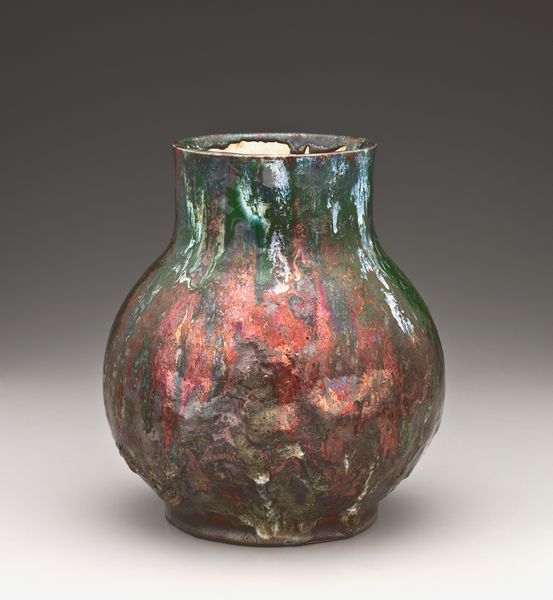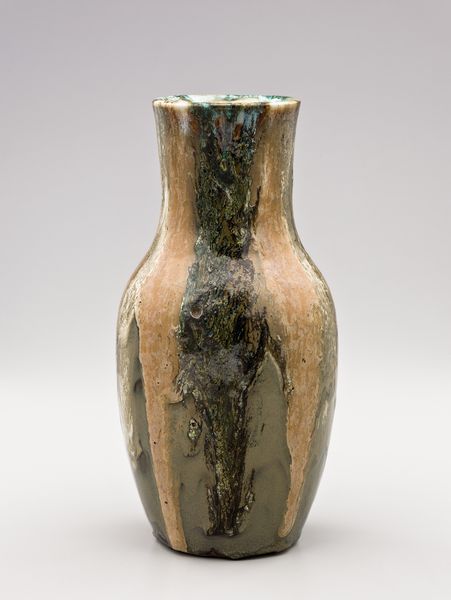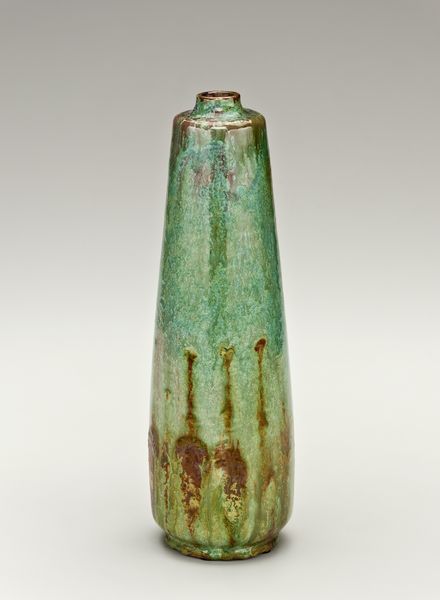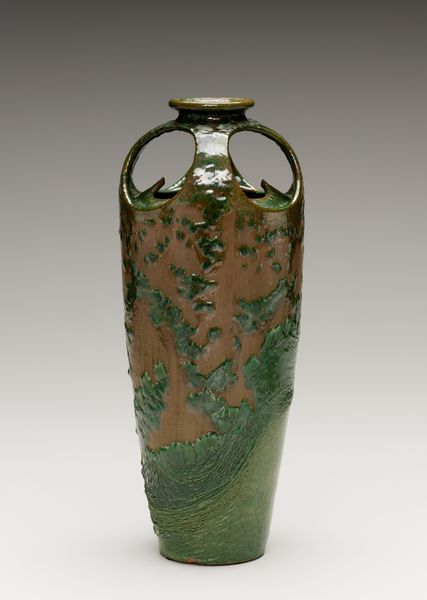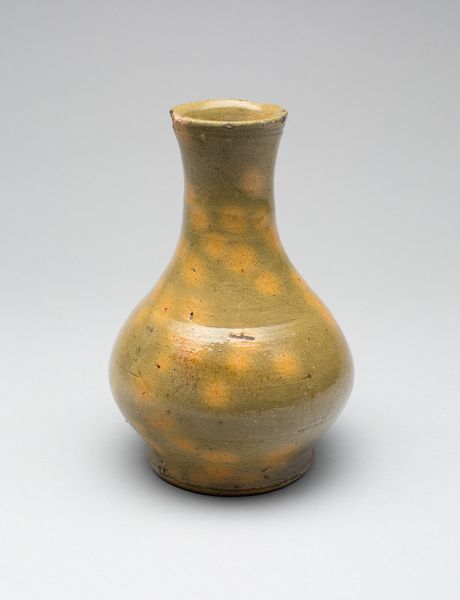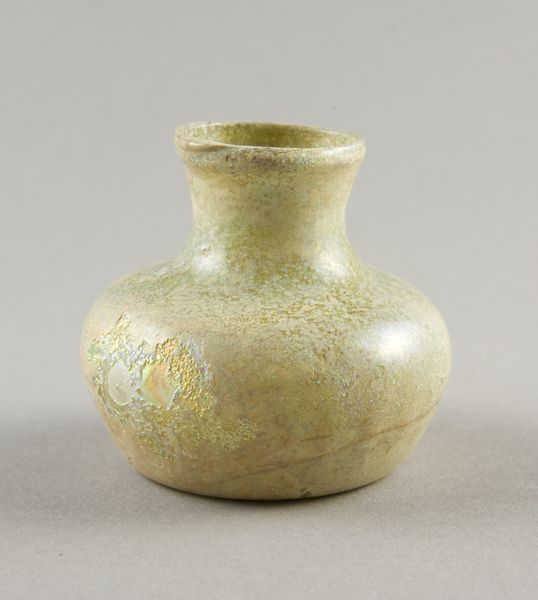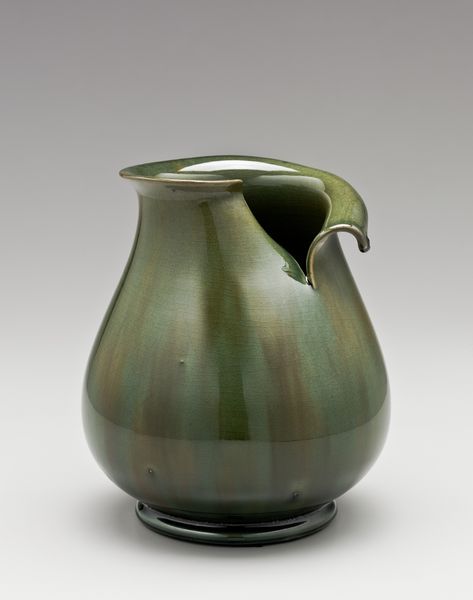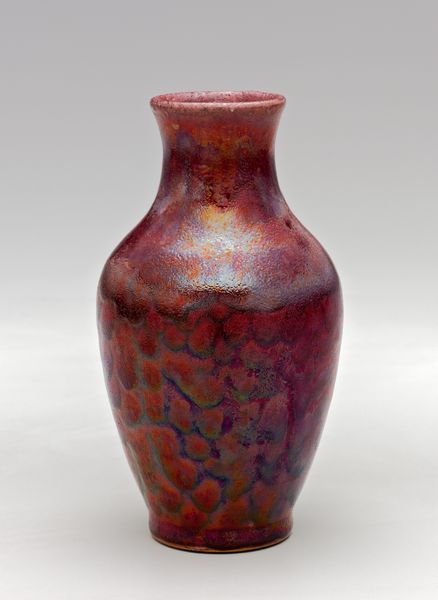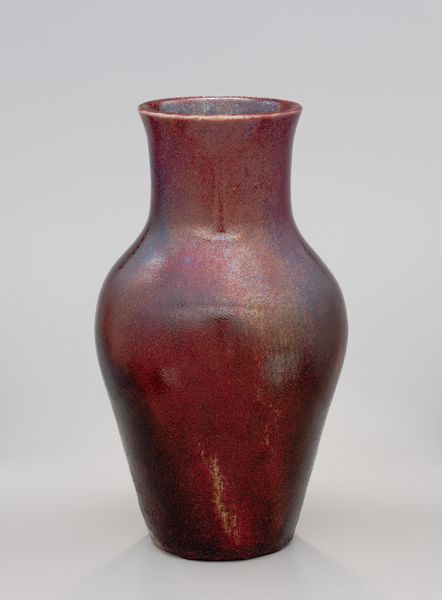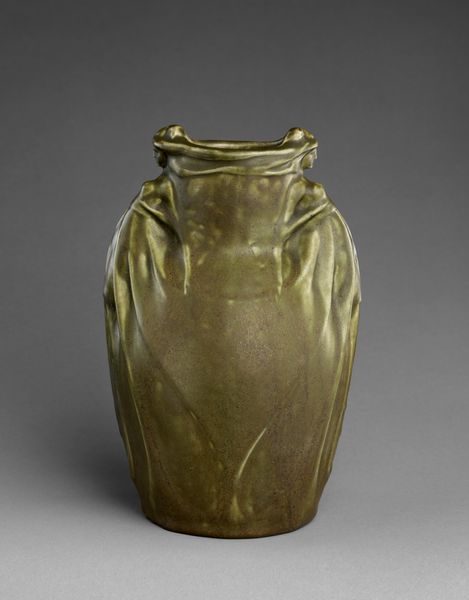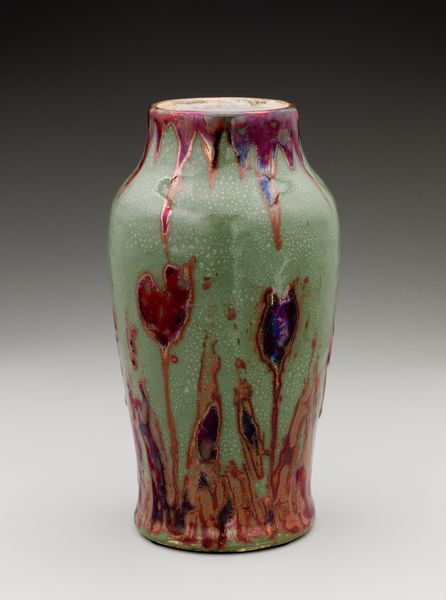
ceramic, earthenware
#
ceramic
#
earthenware
#
decorative-art
Dimensions: 8 1/8 in. (20.6 cm)
Copyright: Public Domain
Editor: Here we have a ceramic vase by William J. Walley, dating sometime between 1895 and 1921. The glazing technique gives it a very tactile, almost weathered feel. I'm curious, what narratives or contexts come to mind when you see this piece? Curator: Well, I'm immediately drawn to the way this vase embodies the Arts and Crafts movement’s response to industrialization. This piece wasn’t churned out in some factory, and instead, celebrates the individual artisan. How do we reclaim agency in a world increasingly dominated by mechanized production? Editor: So, it's a statement about labor? Curator: Precisely! Consider the timeline – late 19th, early 20th century. Workers rights, women’s suffrage… Movements challenging established power structures. What might a craft object signify in that landscape? Editor: A sort of…quiet resistance? An assertion of human skill over machine power? Curator: Exactly. And note the choice of material, humble earthenware, glazed in these muted, organic colors. What statement does that make about beauty, about value? Is Walley suggesting an alternative to mass-produced, flashy commodities? Editor: It's certainly a shift away from ornate, mass-produced pieces, focusing instead on natural elements and craftsmanship. It almost feels like a call to slow down, to appreciate the process. Curator: Absolutely! The imperfections become virtues. How can we see this vase, and others like it, as both an aesthetic object *and* a document of its time? Editor: It's fascinating how something seemingly simple can hold so much meaning when you unpack its historical and social context. I’ll never look at a vase the same way again. Curator: And that is the point. Question the story and context, not just the object.
Comments
No comments
Be the first to comment and join the conversation on the ultimate creative platform.
